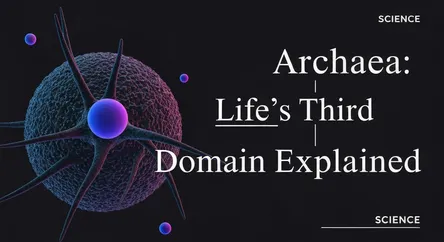Science
Archaea: Life's Third Domain Explained

Discover archaea, a domain of single-celled extremophiles. Learn why these unique microbes are trending in biotech and what they mean for human health.
What is it?
Archaea are a domain of single-celled microorganisms. Like bacteria, they are prokaryotes, meaning they have no cell nucleus. For a long time, they were classified with bacteria, but genetic analysis revealed they form a distinct branch on the tree of life, separate from both bacteria and eukaryotes. Many archaea are known as extremophiles, thriving in harsh conditions inhospitable to most life, such as volcanic hot springs, deep-sea vents, and extremely salty water. However, they are also found in a wide range of more moderate environments, including soil, oceans, and even the human gut.
Why is it trending?
Scientific interest in archaea is surging due to new discoveries about their diversity and potential applications. Advances in DNA sequencing have revealed that archaea are far more widespread than previously thought, playing key roles in various ecosystems. Their unique enzymes, which function under extreme temperatures and pH levels, are highly valuable in biotechnology. These 'extremozymes' are being explored for use in everything from laundry detergents and food processing to biofuel production and bioremediation (using microbes to clean up pollutants), making them a hot topic in industrial microbiology and green technology.
How does it affect people?
Archaea have a significant, though often indirect, impact on human life. They are vital players in global biogeochemical cycles, such as the carbon and nitrogen cycles, which help regulate our planet's climate. In biotechnology, their unique properties offer solutions for creating more efficient and sustainable industrial processes. Furthermore, researchers are uncovering the role of archaea within the human microbiome. While not known to cause disease like some bacteria, their presence is being studied for its influence on digestion, metabolism, and overall health, opening new avenues for medical research and diagnostics.